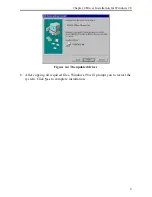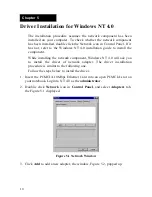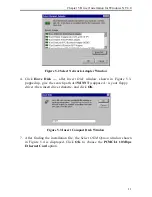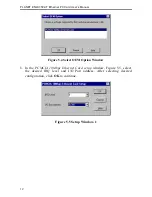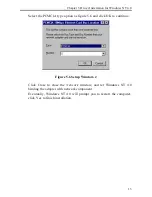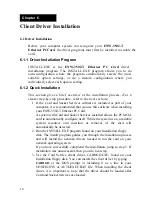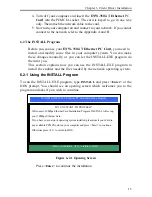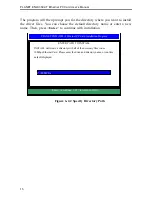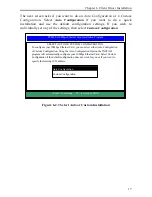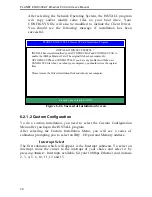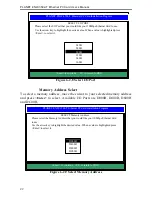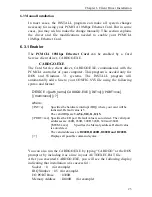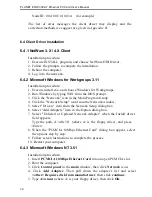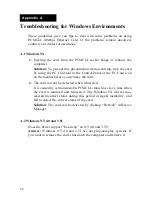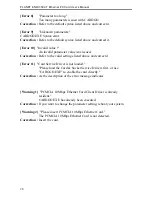
Chapter 6 Client Driver Installation
23
6.3 Manual Installation
In most cases, the INSTALL program can make all system changes
necessary for using your PCMCIA 10Mbps Ethernet Card. But in some
cases, you may wish to make the change manually. This section explains
the driver and file modifications needed to enable your PCMCIA
10Mbps Ethernet Card.
6.3.1 Enabler
The
PCMCIA 10Mbps Ethernet Card
can be enabled by a Card
Service client driver, CARDGO.EXE.
CARDGO.EXE
The Card Service client driver, CARDGO.EXE, communicates with the
PCMCIA controller of your computer. This program is needed only for
DOS and Windows 3.1 systems. The INSTALL program will
automatically add a line to your CONFIG.SYS file using the following
syntax and format:
DEV
ICE = [path_name] CARDGO.EXE [/INT=x] [/PORT=xxx]
[/mem=xxxx] [/?]
where:
[/INT=x]
Specifies the hardware interrupt (IRQ) where your card will be
indicated. Default value is 5.
The valid IRQs are
3,4,5,6,9,10,11,12,15.
[/PORT=xxx] Specifies the I/O port. Default value is auto detect. The valid port
addresses are 240H, 280H, 300H, 320H, 340 and 360H.
[/MEM=xxxx]
Specifies the Memory address. Default value
is auto detect.
The valid addresses are
D000H, D400H, D800H and DC00H.
[/?]
Displays all possible command syntax.
You can also run the CARDGO.EXE by typing “CARDGO” at the DOS
prompt or by including it as a line in your AUTOEXEC.BAT file.
After you executed CARDGO.EXE, you will see the following display
indicating that installation was successful :
Socket : 0
(for example)
IRQ Number : 05 (for example)
I/O PORT Base
: 0300H
Memory Address
: D400H
(for example)

